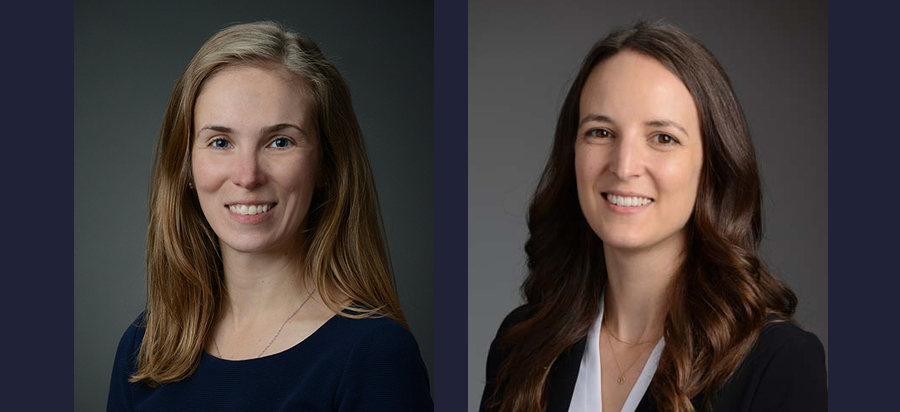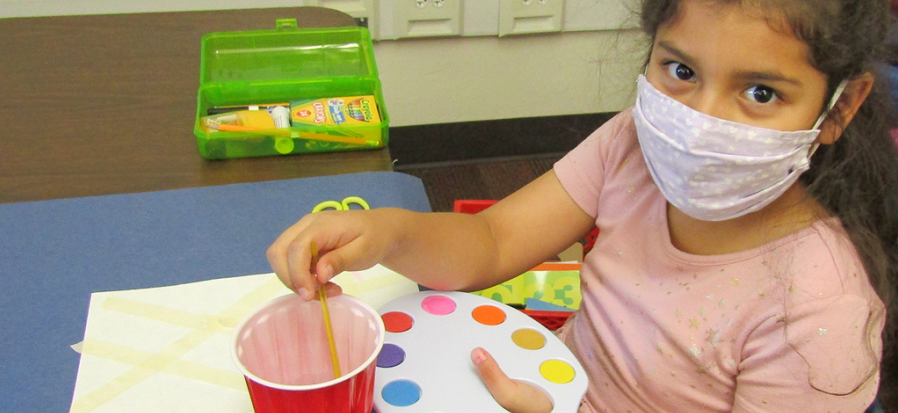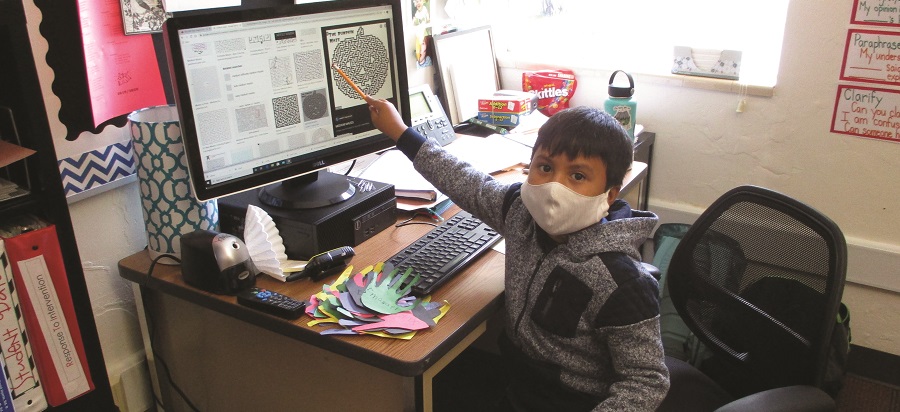In 2019, BellXcel partnered with RAND on a first-of-its-kind study on summer teacher professional development, The Promise of Summer as a Time for Teacher Professional Learning. SCRI talked with the study’s lead researchers Elizabeth Steiner and Laura Stelitano to distill the findings for the broader K-12 field.
Elizabeth is an associate policy researcher at the RAND Corporation with expertise in education policy, policy analysis, program evaluation, and qualitative methods and analysis. Her research is focused on ways to improve public education in the United States, reduce racial and socioeconomic achievement gaps, and improve equity of educational and life outcomes. Her work also addresses implementation of public policy systems of rules and incentives intended to encourage behavior toward a desired outcome function in practice, and how policies could be improved to promote desired outcomes. These interests intersect in her work at RAND, which is focused on studying implementation of education reforms and policies.
Laura is an associate policy researcher at the RAND Corporation. Her research primarily focuses on K-12 education and policy implementation and on workforce development. Her education interests include special education and inclusion, teacher and school leader preparation, and professional development. In the area of workforce development, she is interested in studying the improvement and alignment of workforce development systems and working with transdisciplinary teams to employ continuous improvement processes. She specializes in qualitative and mixed methods.
Q: What is the background and motivation for this study? What did you and BellXcel hope to learn, and what significance do you think the study has for the field?
Elizabeth: A key driver for the study is that summer programs that provide academic instruction for students are very common but not well understood as a context for teacher professional learning (PL). Not much is known from a research perspective on how teachers perceive the PL they receive in such programs, what’s helpful, and what conditions present barriers to effective PL. We also don’t know about the influence of summer programs on teachers’ school-year instruction. Another motivation is that through its prior research, BellXcel found that teachers really valued the PL they experienced working in BellXcel summer programs. BellXcel wanted to explore that idea through an exploratory study conducted by an independent organization such as RAND.
We think the study is important for the field because it begins to answer questions about teachers’ summer PL experiences nationally and through BellXcel, and how teachers feel about PD they experience in the summer compared to PD during the school year. The study took place in 2019 and early 2020, so our data were gathered prior to the COVID-19 pandemic. We conducted what we believe was the first nationally representative survey of U.S. K-12 teachers about summer professional learning. We compared the responses of teachers nationally who were employed in academic summer programs in 2019 with those not employed in such programs but who still reported participating in PL in the summer. We also did a deep dive on the experiences of BellXcel summer teachers and how their summer PL influenced their school-year practices. In addition to the two surveys, we visited three BellXcel summer sites in-person to conduct interviews and focus groups with program teachers and leaders and observe classroom instruction. Finally, we compared the responses of teachers nationally to BellXcel summer teachers to understand what summer conditions teachers viewed as contributing to positive PL experiences.
Q: Why might summer be a good time for teacher professional learning? Did you have any hypotheses going in? What have we learned from other similar studies?
Laura: Other studies haven’t examined teachers’ PL in quite the same way because they generally focus on specific, discrete PL activities or programs. Previous studies have also focused on PL that occurs during the school year.
We generated our hypotheses in part from literature on school-year PL and from BellXcel’s knowledge of their own program and prior research. Based on prior surveys conducted by BellXcel, we thought something about the summer atmosphere—specifically the fact that it’s more relaxed and lower pressure—might play a role in supporting positive PL experiences for teachers. We wondered how aspects of BellXcel’s program like instructional coaching and the presence of co-teachers might influence in teachers’ perceptions of their PL experiences. Based on the literature related to school-year PL, we hypothesized that some features of high-quality PL, such as opportunities to practice instructional skills and coherence and relevance of PL to teacher’s instruction, if present, might also influence teachers’ perceptions of their summer PL.
Q: What did you learn about the national context for summer professional learning?
Elizabeth: In the nationally representative survey of K-12 teachers, we learned about what they do with regard to summer PL. Nearly all teachers (99%) reported participating in at least one PL activity during summer 2019. About 60 percent reported participating in 1-5 PL activities over the summer. Some of the activities were voluntary and some were required by districts. The most common summer PL activities nationally were reading books or articles related to education (86%); collaborating with colleagues (81%); and participating in a professional learning community or in-person PD (60%). The least common were writing assessments and receiving or giving mentoring (30%) and attending a conference (32%).
A large majority of teachers nationally said their summer PL activities were consistent with some best practices from literature. For example, teachers responded that the content was clear and relevant to their instruction and there was a clear connection between different sessions. A large majority of respondents (86 percent-96 percent) who participated in a given PL activity said it was helpful for improving instruction during the following school year.
Q: Were there any differences among teachers nationally who participated in professional learning over the summer—particularly between those who were employed by an academic summer program for students and those who were not?
Laura: Yes. First, it’s important to point out that relatively few teachers nationally (23%) were employed in a summer program for students and 16 percent were employed in summer programs that focused on instruction in academic content. Teachers employed in an academic summer program were more likely to report receiving developmental feedback about their instruction as part of their summer PL than teachers nationally. It makes sense that we would see this difference because developmental feedback typically occurs in the context of classroom instruction—it helps teachers think about what they’re doing in the classroom and how they could improve next time. If you’re not in a classroom, you don’t have those opportunities.
Teachers employed in academic summer programs were also slightly more likely to report that their summer PL helped them improve their school-year practices. Based on our data it’s not clear why that’s the case, but it could be related to the job-embedded nature of the PL.
Teachers employed in an academic summer program were more likely to report receiving developmental feedback about their instruction as part of their summer PL than teachers nationally.
Laura Stelitano
Q: What contextual factors supported and hindered productive PL in BellXcel Summer program sites?
Elizabeth: We found many supports for productive PL in BellXcel summer sites through our survey, focus group, and interview research. First, other teachers were perceived to be supports; with the co-teaching model of 2 or sometimes 3 teachers in one classroom, teachers said they were able to focus more on experimenting with classroom practices and worry less about classroom management. Longer class periods also allowed experimentation because they gave teachers more time to practice new skills and reflect on their instruction. Teachers also said that BellXcel provided enough classroom resources and curricular materials, which relieved teachers of the burden of having to search for resources.
Teachers reported that the absence of high-stakes testing helped facilitate PL by taking the pressure off. In our focus groups, BellXcel teachers told us that preparing for grade-level tests during the school year required careful pacing and they were often required by their districts to cover a certain amount of the curriculum during the year. According to teachers, these school year conditions felt like a lot of pressure and prevented them from teaching in a way that they believe is best for their students. Those pressures were absent in the BellXcel summer environment. Teachers said they could spend more time on a skill or topic if students needed help. They could tailor instructional strategies to the needs of learners. And, teachers felt they had more time to focus on supporting students’ social-emotional learning (SEL), such as building positive relationships. Teachers in our case studies also told us that they were most likely to bring those new SEL skills into their school-year practice the next fall.
We found some variation in programs that could either be perceived as a barrier or interpreted as a natural part of program implementation. We found that there was a wide variety of implementation of instructional coaching in the three BellXcel case study sites. In those three sites, coaches didn’t always conduct observations and provide feedback on instruction. But, it’s not clear if this is actually a barrier to productive PL because the teachers in these sites all had positive perceptions of the coaching support they received. However, if coaches performing observations and providing feedback is something BellXcel wants to support, they might need to strengthen the messaging of their expectations for coaching and provide assistance to sites in removing barriers that may hinder coaching—such as coaches having other administrative duties—so implementation is more consistent across sites.
Teachers said they could spend more time on a skill or topic if students needed help. They could tailor instructional strategies to the needs of learners. And, teachers felt they had more time to focus on supporting students’ social-emotional learning (SEL), such as building positive relationships. Teachers in our case studies also told us that they were most likely to bring those new SEL skills into their school-year practice the next fall.
Elizabeth Steiner
Q: What are the implications of this study for teachers, districts, and researchers?
Laura: There are several. First, we think this study suggests that summer is a potentially important time for PL for teachers. We know that across the country, teachers are participating in PL over the summer. We think this is important because it can be challenging to find adequate time for PL during the school year with so much going on. If there’s a way to leverage summer to find uninterrupted time for PL, that could help teachers.
Given that we’re just scratching the surface of summer PL, we think schools and districts should explore what PL teachers are already doing during the summer. We know very little about what those PL opportunities are and how teachers are connecting what they learn in the summer to their school-year practice. In an ideal world, schools and districts might want to think about how the context in which teachers are already learning in the summer could be better connected to PL during the school year.
If schools or districts offer a summer program that focuses on providing academic instruction to students, they should think about providing PL to teachers as part of this program and connecting it to the PL teachers participate in during the school year. A summer environment that is low pressure, positive, and has extra supports could help teachers practice new techniques. It could also be a great opportunity to provide the kind of developmental feedback that is connected to improved teacher practice. Through coaching, daily adjustments to instruction can be made and put into practice the next day.
Specifically, summer might provide a context that is conducive for supporting teacher PL of SEL and student-centered practices. As teachers adapt their practices in the summer, they have the chance to make new and different connections with students. Schools and districts could consider whether they might adopt some of the beneficial elements of the BellXcel model, such as longer class periods and a co-teaching model, which allowed teachers the flexibility to experiment with new strategies.
Q: Do the findings from this study suggest any key practices for BellXcel and others to continue or discontinue?
Elizabeth: For BellXcel, the key lesson is to continue to provide those supports and continue to do the things that teachers appreciate. This includes co-teaching, manageable class sizes, and providing adequate curricular and classroom resources. I also think the voluntary nature of BellXcel—both for teachers and students—was a support. Everyone wanted to be there, which helped it feel like a supportive environment. The absence of testing and pacing requirements is something BellXcel can continue to support, but it might not be possible for all summer programs to do this, especially in programs that focus on helping students catch up on learning they missed during the school year. All programs could consider providing resources like coaching support and SEL curricula to help teachers develop their SEL instructional skills.
It would be good for BellXcel and other programs to continue providing opportunities to learn from colleagues and participate in developmental feedback. There is a lot of evidence that those types of opportunities can be beneficial.
Q: Is there anything more you’d like to learn now, given that PD has likely changed due to the Covid-19 pandemic?
Laura: Yes, we’d love to have the opportunity to ask some of these same questions of teachers who participated in BellXcel Remote, like what supports were important, were they still able to collaborate with colleagues and focus on SEL, was it still a lower pressure environment, even in a remote context? We’d love to know more about how teachers collaborate when PL is remote and how to provide developmental feedback for teachers in a remote environment. There’s been so much focus on how teachers are providing instruction to students remotely, but we’ve seen less emphasis on how teachers themselves can learn when their own opportunities for PL are remote.




